May 6, 2018 Auroras (and STEVE)
Eastern Itasca County, Minnesota
A high speed stream of solar wind came by Earth today. The corotating interaction region (CIR), which has the strongest magnetic fields, and quite often, the best auroras, came by during the day, so it's likely the best of the auroras happened before, or right around, sunset. In anticipation of a nice show, I headed out from home before sunset, headed for a small lake in the eastern part of the county. There were clouds to contend with, but the skies were forecast to clear, so I wanted to be there early.
The clouds persisted a bit longer than I would have liked, so I could not see the auroras until astronautical twilight. Looking back on my time lapse (where the auroras can be distinguished from clouds due to the sped-up motion of the time lapse), the auroras were present an hour before that. By the time the clouds cleared, they had dimmed a bit and retreated to the northern horizon, but then STEVE came out. STEVE (Strong Thermal Emission Velocity Enhancement) is an aurora-related phenomenon that occurs equatorward from the main auroral band. It typically is more of a grayish color, but there sometimes green "picket fence" auroras embedded with STEVE. I took a few shots to give you some perspective.
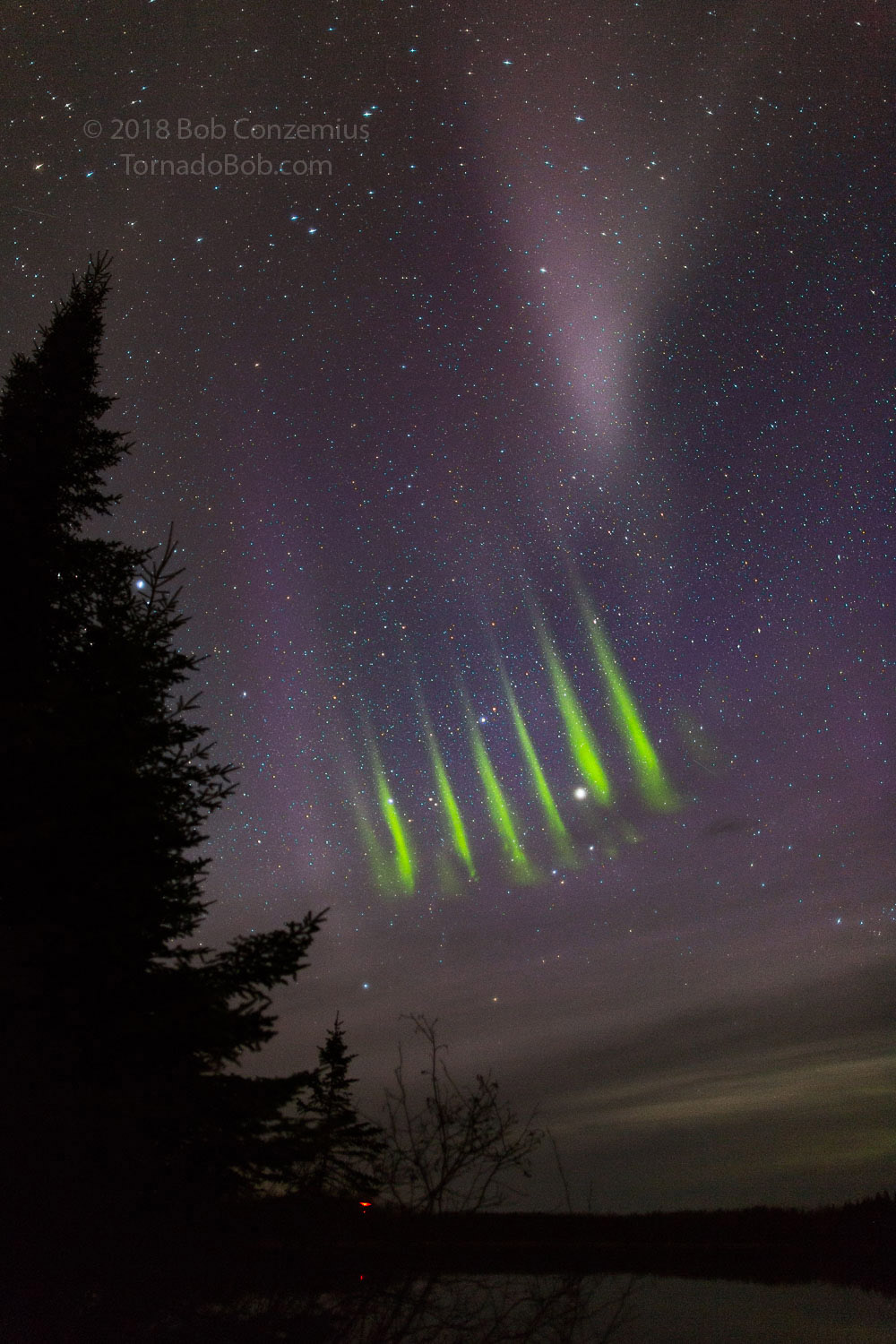 |
| STEVE and the picket fence auroras. |
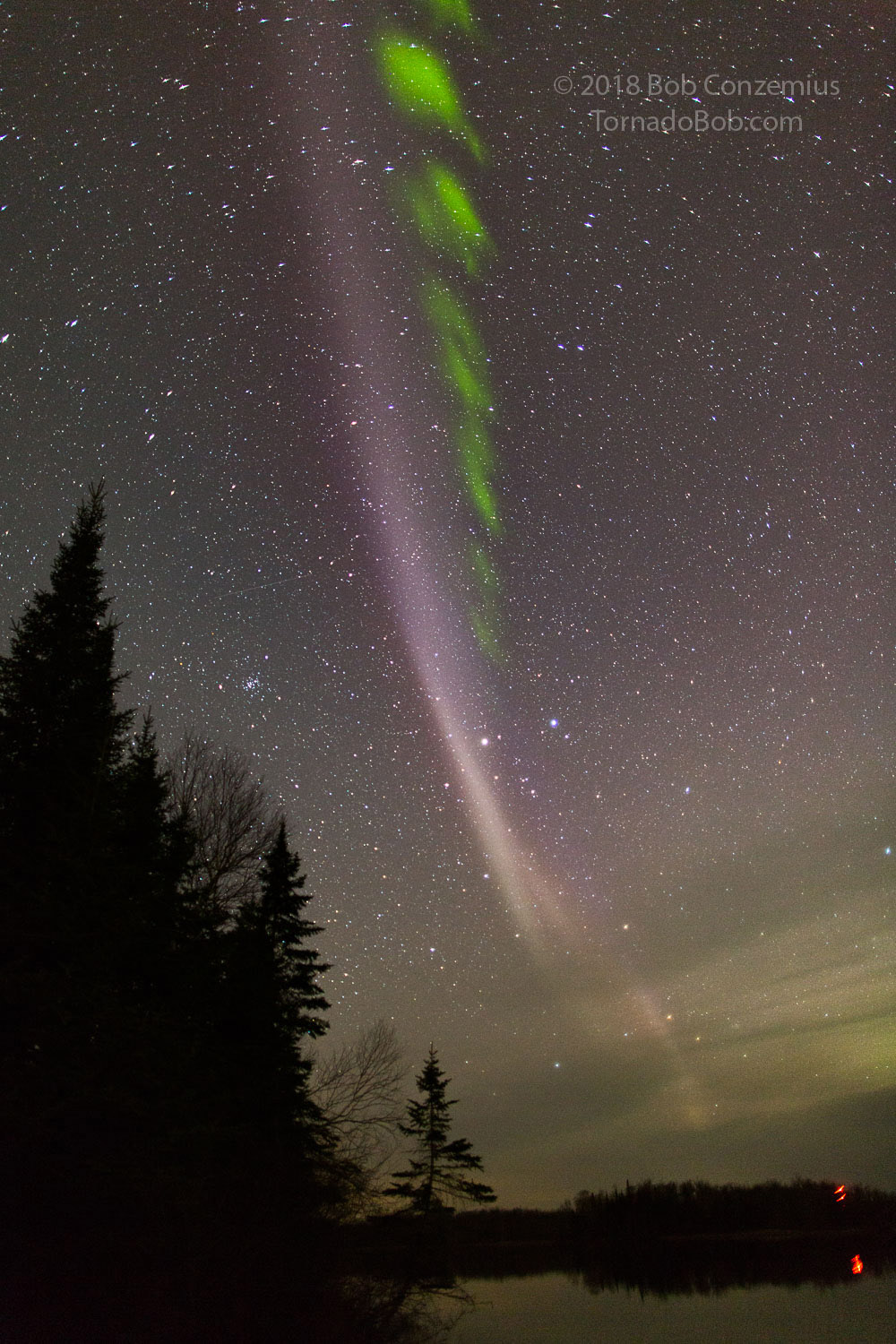 |
| STEVE is the grayish colored band, and it is often accompanied by the green "picket fence" auroras. |
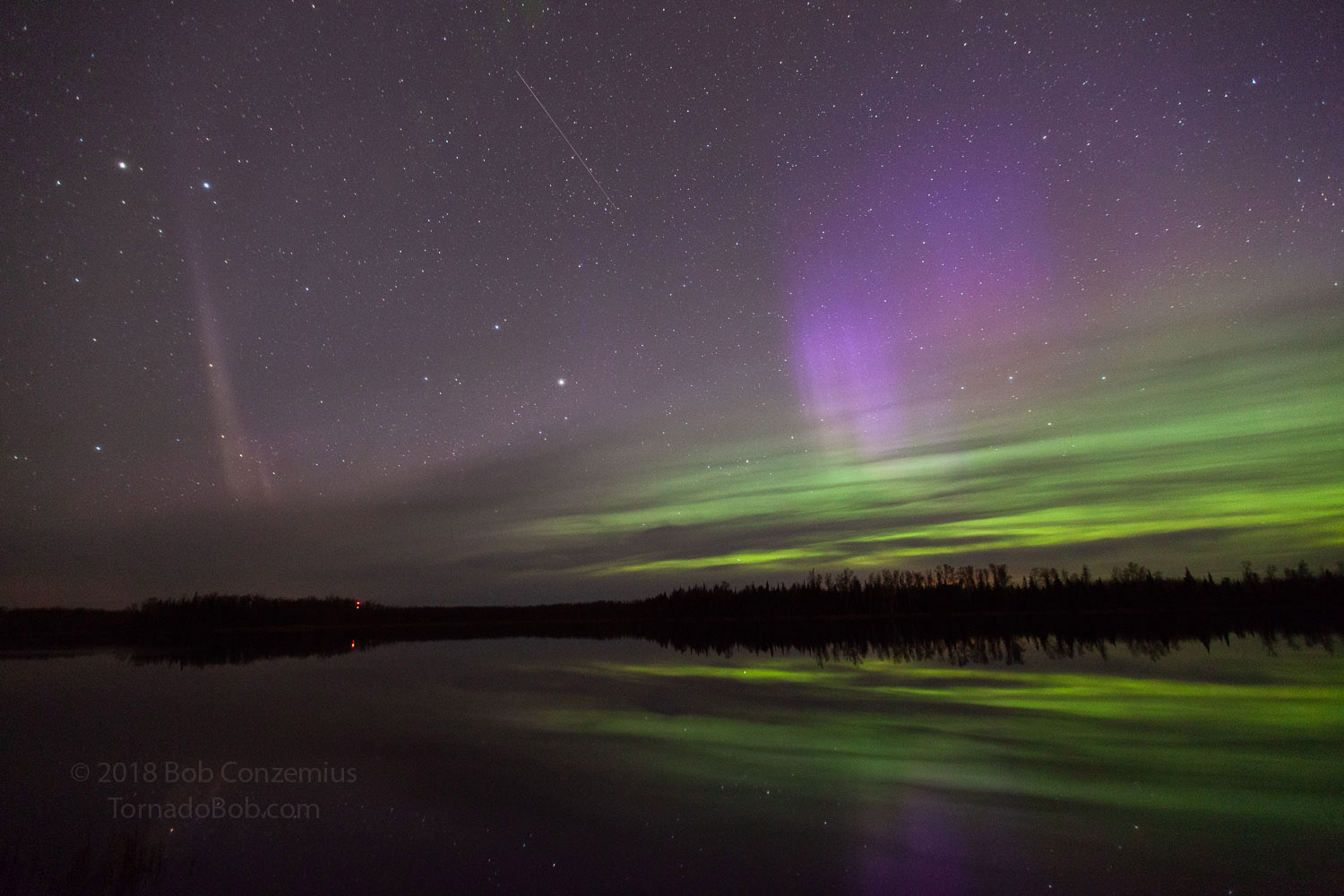 |
| STEVE is on the left, and the main auroral band is on the righmost two thirds of the picture. |
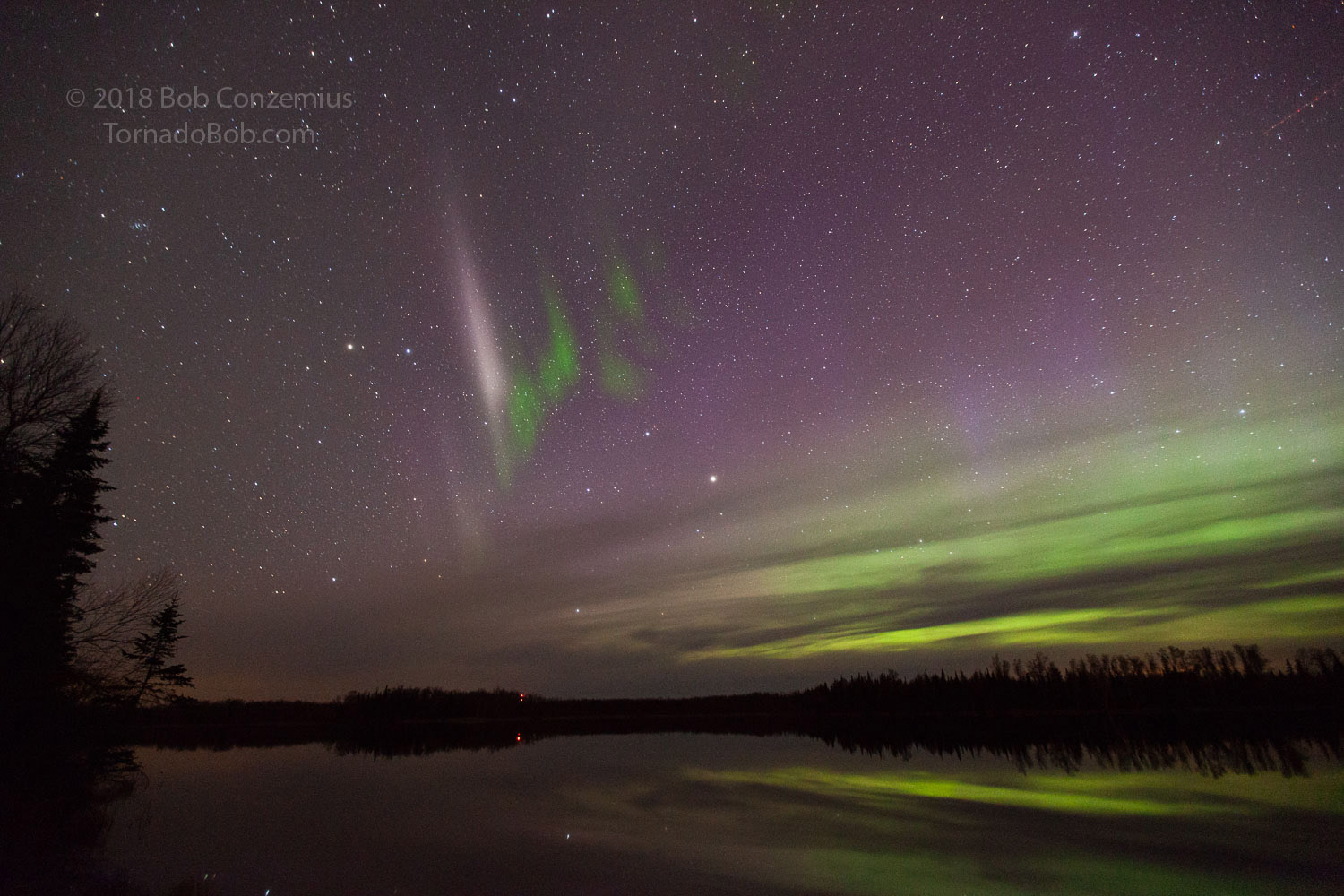 |
| I thought STEVE and the picket fence auroras were closer to the main auroral band than they usually are. |
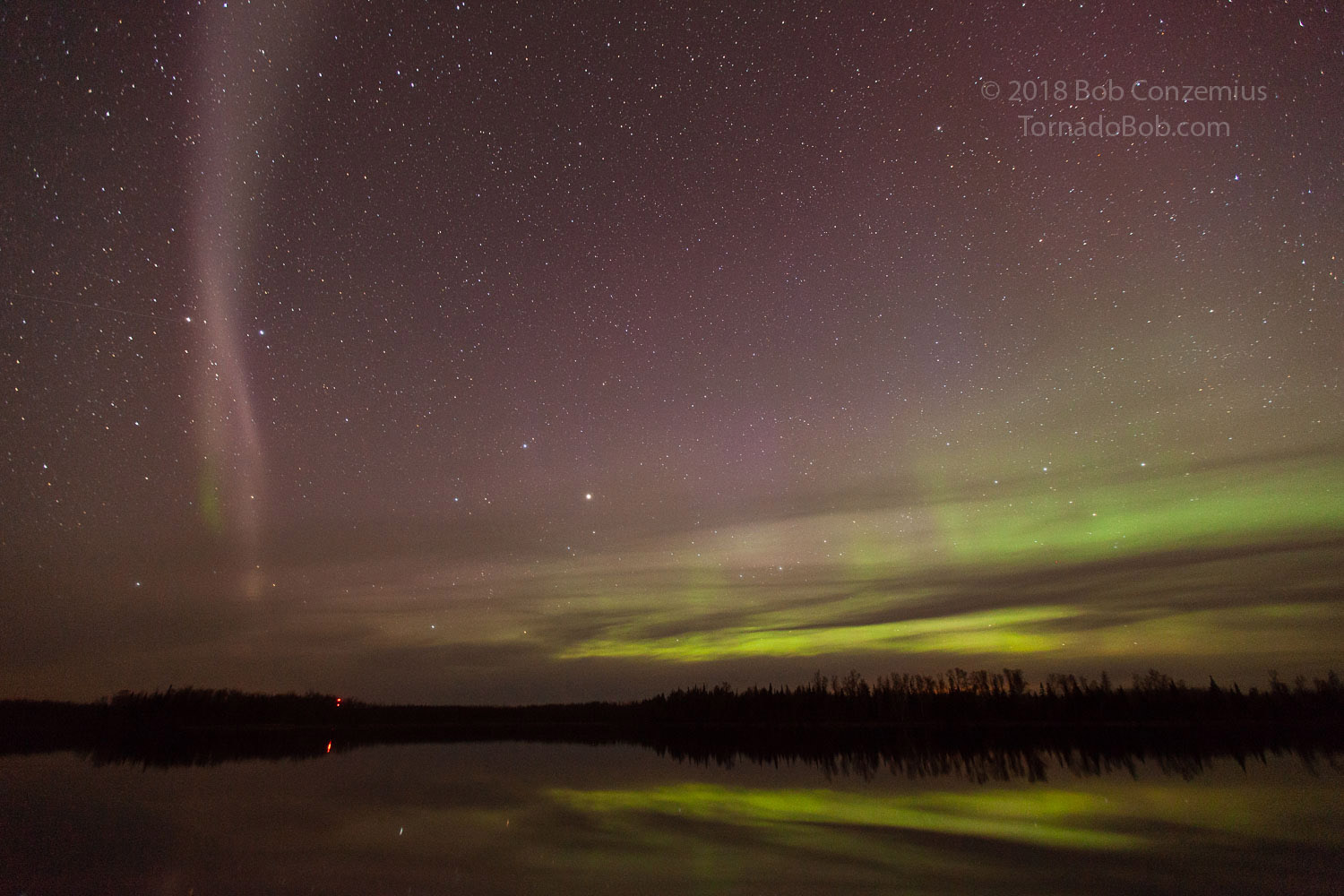 |
| The main auroral band is on the northern horizon (left) while STEVE is the gray/red band that stretches overhead from west to east. |
Back to Auroras | Home